What to do if Hotpoint dishwasher door won’t close?
- HHarold PatelSep 9, 2025
If your Hotpoint dishwasher door won’t close, it might be that the lock was released. Push the door firmly until you hear a “clacking” noise.
What to do if Hotpoint dishwasher door won’t close?
If your Hotpoint dishwasher door won’t close, it might be that the lock was released. Push the door firmly until you hear a “clacking” noise.
What to do if my Hotpoint LFF 8M121 does not take any water in?
If your Hotpoint Dishwasher isn't taking in water, it could be due to a few reasons. There might be no water in the mains supply, or the water inlet hose could be bent. Try turning on the tap; the appliance should start after a few minutes. If the appliance lock has been activated, switch off the appliance using the ON/OFF button, turn on the tap, and switch the appliance back on after a few seconds. Then, reprogram the appliance and restart the wash cycle.
Why are the dishes not clean in my Hotpoint LFF 8M121?
If your dishes aren't clean after a Hotpoint Dishwasher cycle, several factors could be responsible. The racks might be overloaded, the crockery might not be arranged properly, or the sprayer arms can't rotate freely. Also, the wash cycle might be too gentle, an excessive amount of foam might have been produced because the detergent hasn't been measured out correctly or it is not suitable for dishwashers, the lid on the rinse aid compartment hasn't been shut correctly, the filter is dirty or blocked, or the refined salt level is low. As a solution, switch off the appliance by pressing the ON/OFF button. Shut off the water tap to eliminate the risk of flooding and remove the plug from the electrical socket. Make sure the water inlet filter has not become blocked by impurities.
Why does my Hotpoint LFF 8M121 Dishwasher not drain water?
Your Hotpoint Dishwasher might not be draining water because the cycle hasn't finished yet, the water inlet hose is bent, the drain duct is blocked, or the filter is clogged with food residues.
Why is crockery not drying properly in my Hotpoint Dishwasher?
Crockery might not dry properly in your Hotpoint Dishwasher if a wash cycle without a drying cycle was selected, the rinse aid has been used up or the dosage is too low, the rinse aid dispenser setting isn't suitable, or the crockery is made from non-stick material or plastic.
Why won't my Hotpoint LFF 8M121 start?
If your Hotpoint dishwasher isn't starting, try these steps: First, turn the dishwasher off and then on again using the ON/OFF button, waiting about a minute before restarting. Also, ensure the dishwasher is properly plugged into the electrical outlet and that the door is fully closed.
Why do dishes have white film in Hotpoint dishwasher?
A white film or limescale deposits on dishes from your Hotpoint dishwasher can occur if the level of refined salt is low, or the dosage setting isn't suited to the water hardness. Also, check that the lid on the salt dispenser is closed properly and that the rinse aid hasn't been used up or the dosage is too low.
What does the filter symbol mean on my Hotpoint LFF 8M121 Dishwasher?
If the “filter” symbol lights up on your Hotpoint dishwasher, ensure the wash cycle has ended. Then, open the dishwasher door and clean the cup filter and stainless-steel filter. The “blocked filter” symbol will switch off when the next cycle starts.
What to do if Hotpoint LFF 8M121 Dishwasher won't take in water and shows H2O tap symbol?
If your Hotpoint dishwasher isn't taking in water and shows the H2O tap symbol, check if there's water in the mains supply. Also, inspect the water inlet hose for bends. Turn on the tap; the appliance should start after a few minutes. If the appliance lock has been activated, switch off the appliance using the ON/OFF button, turn on the tap, and switch the appliance back on after a few seconds. Then, reprogram the appliance and restart the wash cycle.
Why are there white film or limescale deposits on dishes and glasses from my Hotpoint LFF 8M121 Dishwasher?
If your dishes and glasses have a white film or limescale deposits after being washed in your Hotpoint Dishwasher, it could be due to a low level of refined salt, the dosage setting not being suited to the hardness of the water, the lid on the salt dispenser not being closed properly, or the rinse aid being used up or the dosage being too low.
Safety rules for appliance operation, children, domestic use, installation, and handling.
Guidelines for disposing of packaging and the appliance according to environmental regulations.
Tips for reducing water and energy consumption during washes.
Steps to take before contacting service, including checking troubleshooting and restarting.
Details required when contacting technical support, like model and serial number.
Guides on unpacking, positioning, and ensuring the dishwasher is stable and level.
Instructions for connecting water hoses and electrical plug by qualified technicians.
Details on connecting the inlet hose to water and the outlet hose to a drain.
Explains the appliance's safety systems to prevent water leaks and floods.
Safety checks for electrical connection, earthing, voltage, and socket compatibility.
Identifies key parts of the dishwasher with numbered labels for easy reference.
Explains the functions of buttons, display, and indicator lights on the control panel.
General advice on loading, removing food, arranging crockery, and handling plastic items.
Guidance on loading pans, lids, dishes, and large plates in the lower rack.
Instructions for placing cutlery safely in the basket, including sharp items.
Advice on loading delicate items like glasses and cups in the upper rack.
Step-by-step guide to initiating a wash cycle.
How to correctly dose detergent for optimal washing results and environmental protection.
Procedure to change a wash cycle if an error is made early on.
How to safely add more dishes during an ongoing wash cycle.
Explains how cycles resume after interruptions like power cuts or door opening.
Table detailing various wash cycles, their features, duration, and water/energy consumption.
Specific instructions on selecting cycles and the corresponding detergent amounts.
General notes regarding cycle performance, place settings, and consumption reduction.
How to activate the Extra Drying option to improve crockery dryness.
General rules for setting, changing, and deselecting wash options.
Instructions for setting a delayed start for wash cycles between 1 and 24 hours.
How to use the Short Time option to reduce the duration of main wash cycles.
Guidance on using the Tabs option with multi-functional detergent tablets for optimal results.
How to use the Zone Wash option to wash only a specific rack for targeted cleaning.
Emphasizes using only dishwasher-specific products and recommends salt usage.
Step-by-step guide to filling the rinse aid dispenser correctly.
How to adjust the rinse aid dosage (0-4) for optimal drying results.
Explains how to set the water softener based on local water hardness for better performance.
Instructions for filling the salt dispenser to prevent limescale build-up.
Steps to safely turn off water and electricity supplies before cleaning or maintenance.
How to clean the external surfaces and control panel using a soft cloth.
Tips to prevent odors by keeping the door ajar and cleaning seals.
How to remove and clean the upper and lower sprayer arms to ensure proper water spray.
Procedure to clean the filter located in the water inlet hose to prevent blockages.
Detailed steps to clean the three filters (cylindrical, cup, plate) for optimal wash results.
Recommendations for storing the dishwasher safely during long periods of non-use.
Possible causes and solutions for the appliance failing to start or respond to controls.
Solutions for a door that does not close properly or is not securely latched.
Troubleshooting steps for issues related to water not draining from the dishwasher.
Reasons for excessive noise and how to resolve them, such as rattling dishes.
Solutions for white film or limescale build-up on dishes and glasses.
Causes and fixes for streaking or a bluish tinge on washed crockery.
Reasons why dishes are not drying correctly and troubleshooting steps.
Troubleshooting steps for dishes that are not coming out clean after a wash cycle.
Explains the Tap shut-off alarm (no water intake) and how to resolve it.
How to resolve the clogged filter alarm indicated on the display by cleaning the filters.
Safety rules for appliance operation, children, domestic use, installation, and handling.
Guidelines for disposing of packaging and the appliance according to environmental regulations.
Tips for reducing water and energy consumption during washes.
Steps to take before contacting service, including checking troubleshooting and restarting.
Details required when contacting technical support, like model and serial number.
Guides on unpacking, positioning, and ensuring the dishwasher is stable and level.
Instructions for connecting water hoses and electrical plug by qualified technicians.
Details on connecting the inlet hose to water and the outlet hose to a drain.
Explains the appliance's safety systems to prevent water leaks and floods.
Safety checks for electrical connection, earthing, voltage, and socket compatibility.
Identifies key parts of the dishwasher with numbered labels for easy reference.
Explains the functions of buttons, display, and indicator lights on the control panel.
General advice on loading, removing food, arranging crockery, and handling plastic items.
Guidance on loading pans, lids, dishes, and large plates in the lower rack.
Instructions for placing cutlery safely in the basket, including sharp items.
Advice on loading delicate items like glasses and cups in the upper rack.
Step-by-step guide to initiating a wash cycle.
How to correctly dose detergent for optimal washing results and environmental protection.
Procedure to change a wash cycle if an error is made early on.
How to safely add more dishes during an ongoing wash cycle.
Explains how cycles resume after interruptions like power cuts or door opening.
Table detailing various wash cycles, their features, duration, and water/energy consumption.
Specific instructions on selecting cycles and the corresponding detergent amounts.
General notes regarding cycle performance, place settings, and consumption reduction.
How to activate the Extra Drying option to improve crockery dryness.
General rules for setting, changing, and deselecting wash options.
Instructions for setting a delayed start for wash cycles between 1 and 24 hours.
How to use the Short Time option to reduce the duration of main wash cycles.
Guidance on using the Tabs option with multi-functional detergent tablets for optimal results.
How to use the Zone Wash option to wash only a specific rack for targeted cleaning.
Emphasizes using only dishwasher-specific products and recommends salt usage.
Step-by-step guide to filling the rinse aid dispenser correctly.
How to adjust the rinse aid dosage (0-4) for optimal drying results.
Explains how to set the water softener based on local water hardness for better performance.
Instructions for filling the salt dispenser to prevent limescale build-up.
Steps to safely turn off water and electricity supplies before cleaning or maintenance.
How to clean the external surfaces and control panel using a soft cloth.
Tips to prevent odors by keeping the door ajar and cleaning seals.
How to remove and clean the upper and lower sprayer arms to ensure proper water spray.
Procedure to clean the filter located in the water inlet hose to prevent blockages.
Detailed steps to clean the three filters (cylindrical, cup, plate) for optimal wash results.
Recommendations for storing the dishwasher safely during long periods of non-use.
Possible causes and solutions for the appliance failing to start or respond to controls.
Solutions for a door that does not close properly or is not securely latched.
Troubleshooting steps for issues related to water not draining from the dishwasher.
Reasons for excessive noise and how to resolve them, such as rattling dishes.
Solutions for white film or limescale build-up on dishes and glasses.
Causes and fixes for streaking or a bluish tinge on washed crockery.
Reasons why dishes are not drying correctly and troubleshooting steps.
Troubleshooting steps for dishes that are not coming out clean after a wash cycle.
Explains the Tap shut-off alarm (no water intake) and how to resolve it.
How to resolve the clogged filter alarm indicated on the display by cleaning the filters.
| Type | Freestanding |
|---|---|
| Appliance placement | Freestanding |
| Noise Level | 41 dB |
| Washing class | A |
| Drying class | A |
| Delay Start | Yes |
| Half Load Option | Yes |
| Height | 850 mm |
| Width | 600 mm |
| Depth | 600 mm |
| Dimensions (H x W x D) | 85 x 60 x 60 cm |
| Product size | Full-size |


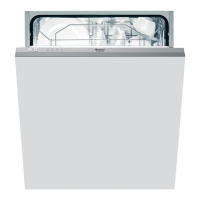

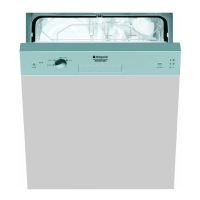
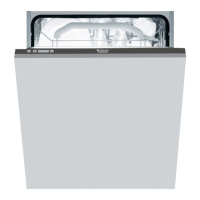

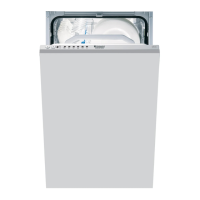
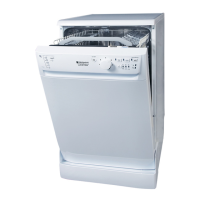

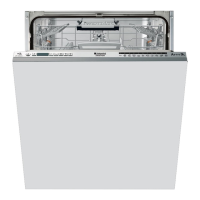

